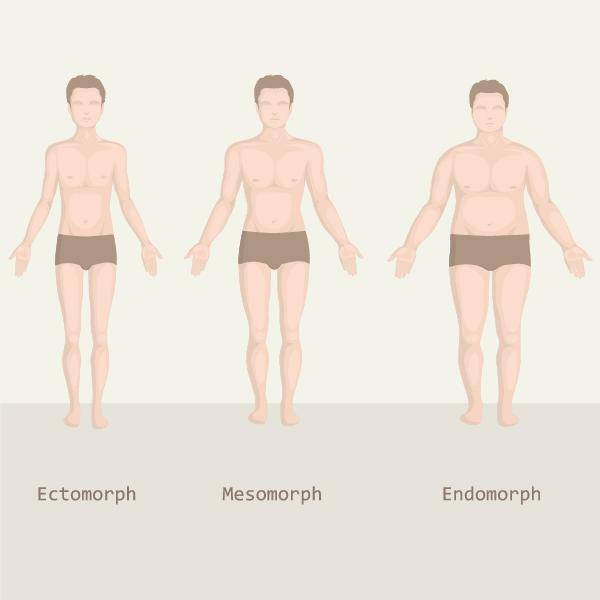There once was a woman we’ll refer to as Lucy. Growing up, Lucy was what you would call “big boned.” She wasn’t fat, but she wasn’t twiggy like some of her peers, and this frustrated her to no end. She never became much fatter as a child, but started to notice a disturbing trend in her twenties and thirties. As she grew older and transitioned into a career, Lucy realized she couldn’t eat whatever she wanted anymore without suffering the consequences.
A Look at Lucy’s Life
Lucy’s diet wasn’t what she would call “terrible.” Kashi Go Lean cereal, orange juice, and toast with peanut butter for breakfast. A sandwich with some greens, meat, and cheese for lunch. Some kind of meat or fish and starch for dinner. She never ate to the point of being beyond full, but she didn’t like to be hungry either. So in the midmorning and early afternoons when Lucy got the munchies, she would grab a handful of almonds and snack on those to keep from crashing. In the evenings after dinner, she would have a glass of wine (or two) because of the “antioxidants”
The problem became that the combination of Lucy’s desk job, diet, and inactivity caused her to steadily increase in weight. Her somatotype (in Lucy’s case, a genetic predisposition for putting on weight easily around her hips, thighs, and midsection) wasn’t helping much either. Those twiggy girls she knew when she was a child? They were pretty much twiggy as adults, too. They had different somatotypes that predisposed them to remain thin. “The world isn’t fair,” thought Lucy.
Lucy Finds Out She an Endomorph
Lucy, being an ever industrious individual, decided to do some research to find out why she was having issues with her weight. She was shocked at what she found. According to Lucy’s findings, she was an endomorph. Endomorphs are characterized by increased fat storage around the midsection, hips, and thighs. They have slower metabolisms by nature and a lower tolerance for carbohydrate-rich foods. The most common goal of endomorphs is the loss of body fat. In order to achieve this, endomorphs need a consistently active lifestyle, because even short periods off from exercise will see the fat creep back.
Upon reading this, Lucy’s jaw dropped. All of these things described her. The reason for her steady weight gain made more sense. Not only was she inactive, but her diet, which she thought wasn’t bad, was in fact terrible for her body type. It was at this moment in time that Lucy realized she was not alone, but that she needed help.
Lucy Hits the Gym
 Armed with her new knowledge, Lucy began training at a local gym. She strength trained three times per week, on Monday, Wednesday, and Saturday. She did cardio on Tuesdays and Thursdays, and took Fridays and Sundays off to recover. Meanwhile, she changed her diet by increasing her protein intake dramatically – a minimum of 25 to thirty grams at any given meal. She also inserted healthy fats in to her diet without going overboard with the handfuls of nuts, and decreased her starchy carbohydrate intake. Not only that, but she cut out alcohol and began timing her carbohydrate intake to immediately after her workouts. Over time, Lucy began to notice some serious changes in her body.
Armed with her new knowledge, Lucy began training at a local gym. She strength trained three times per week, on Monday, Wednesday, and Saturday. She did cardio on Tuesdays and Thursdays, and took Fridays and Sundays off to recover. Meanwhile, she changed her diet by increasing her protein intake dramatically – a minimum of 25 to thirty grams at any given meal. She also inserted healthy fats in to her diet without going overboard with the handfuls of nuts, and decreased her starchy carbohydrate intake. Not only that, but she cut out alcohol and began timing her carbohydrate intake to immediately after her workouts. Over time, Lucy began to notice some serious changes in her body.
With her newfound patience, consistency, and trust in the process, Lucy was able to lose loads of body fat and get super strong. But she couldn’t have done it with only exercise or only diet. The two had to be combined in order to maximize her results.
The Grass Is Always Greener
This is the story of most people who are endomorphic. I’ll be honest – I am not like this. I’m one of those twiggy kids, for better or worse (also known as an ectomorph). I’m thin and weak by nature. I have to work my butt off just to maintain my weight and strength. If I stopped exercising now, I would lose three to five pounds (of mostly muscle) every two weeks. This would continue until I dropped to around 145 to 148 pounds, where my body would hover comfortably.
Where an endomorph needs to work his or her butt off to lose body fat, I am that way with muscle gain. Losing ain’t my problem, but the second I want to put on poundage in the form of true muscle, I have issues. I can tolerate carbs much better than those endomorphs, because my metabolism is naturally faster. At least more than those endomorphic and mesomorphic people.
 Mesomorphs are your bodybuilder types. They can lift fairly light weights and still see their muscles explode in size. Mesomorphs tend to be athletic and naturally muscular. I had a roommate in college who would get bigger by doing endless pushups, for Pete’s sake! Bodyweight exercises do jack-squat for me and most people, but not for him. He had to dial back on his strength training at times just so he could fit in his pants, since his thighs would get bigger so rapidly.
Mesomorphs are your bodybuilder types. They can lift fairly light weights and still see their muscles explode in size. Mesomorphs tend to be athletic and naturally muscular. I had a roommate in college who would get bigger by doing endless pushups, for Pete’s sake! Bodyweight exercises do jack-squat for me and most people, but not for him. He had to dial back on his strength training at times just so he could fit in his pants, since his thighs would get bigger so rapidly.
The moral of the story is that we are all different. What works for me doesn’t necessarily work for Lucy or my college roommate. It’s up to us to find what works the best for us as individuals. Just because I don’t tolerate milk and cheese well doesn’t mean everyone else is that way. Just because Lucy can’t have bread and her beloved Kashi cereal anymore, doesn’t mean everyone needs to go starchy-carb free all the time. Find what works nutritionally, stick to it, do your training, and trust in the process.
You may never be a twig like me, because maybe that’s not what your body wants to be. But you are in control of what you put in your mouth and the amount of exercise you do on a daily basis. The body you earn is a result of those two things combined.
Photos courtesy of Shutterstock.






